Duty Bound
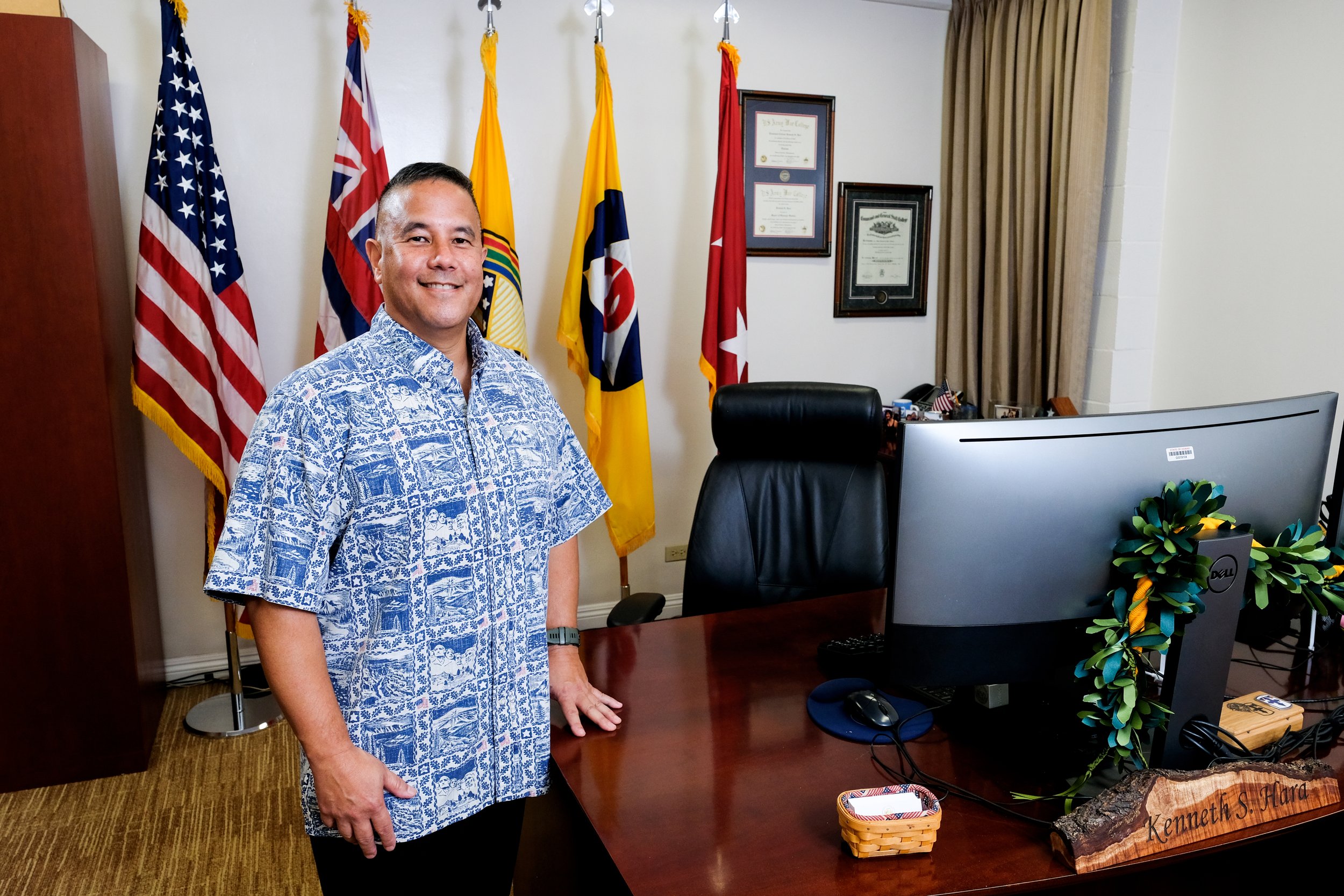
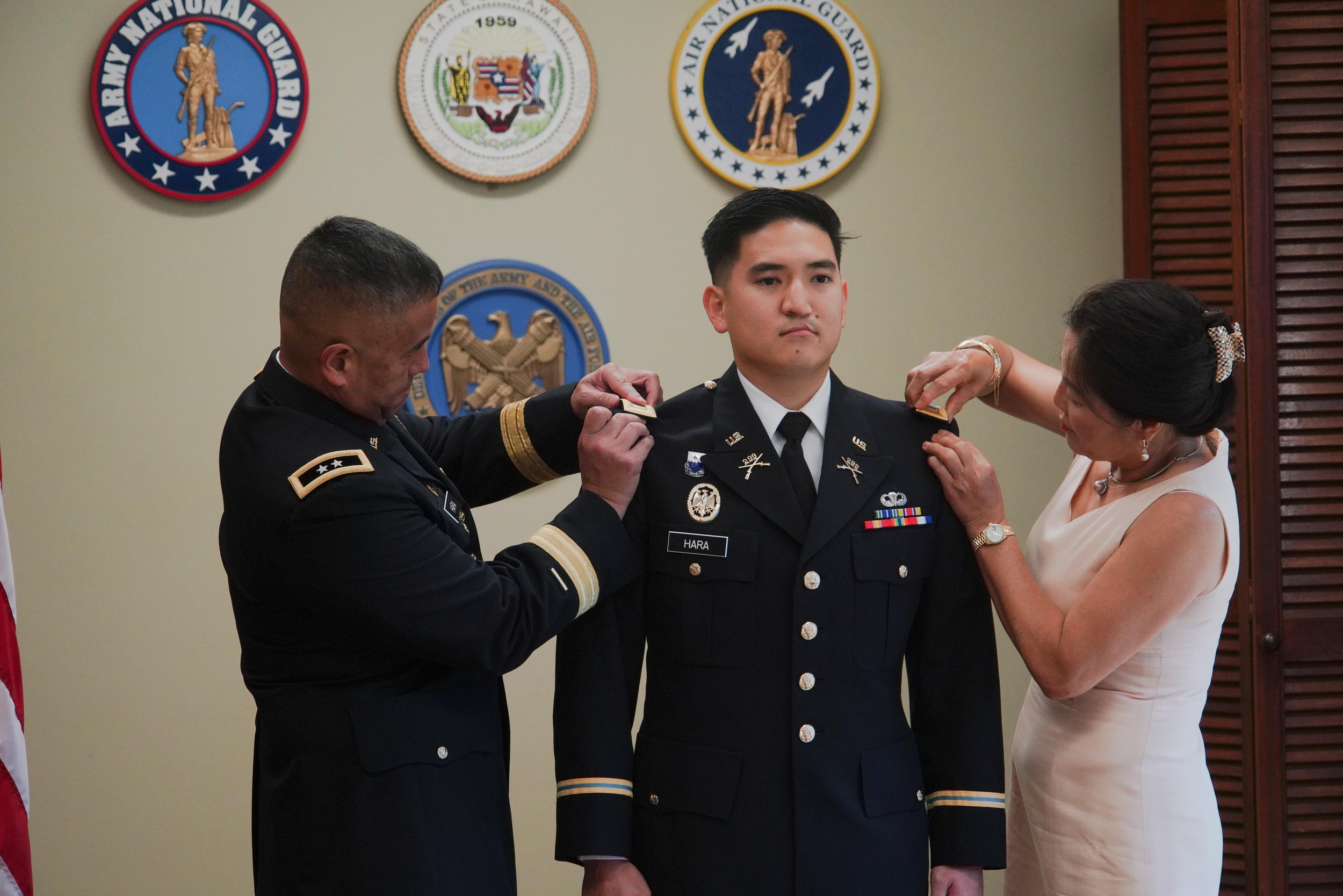
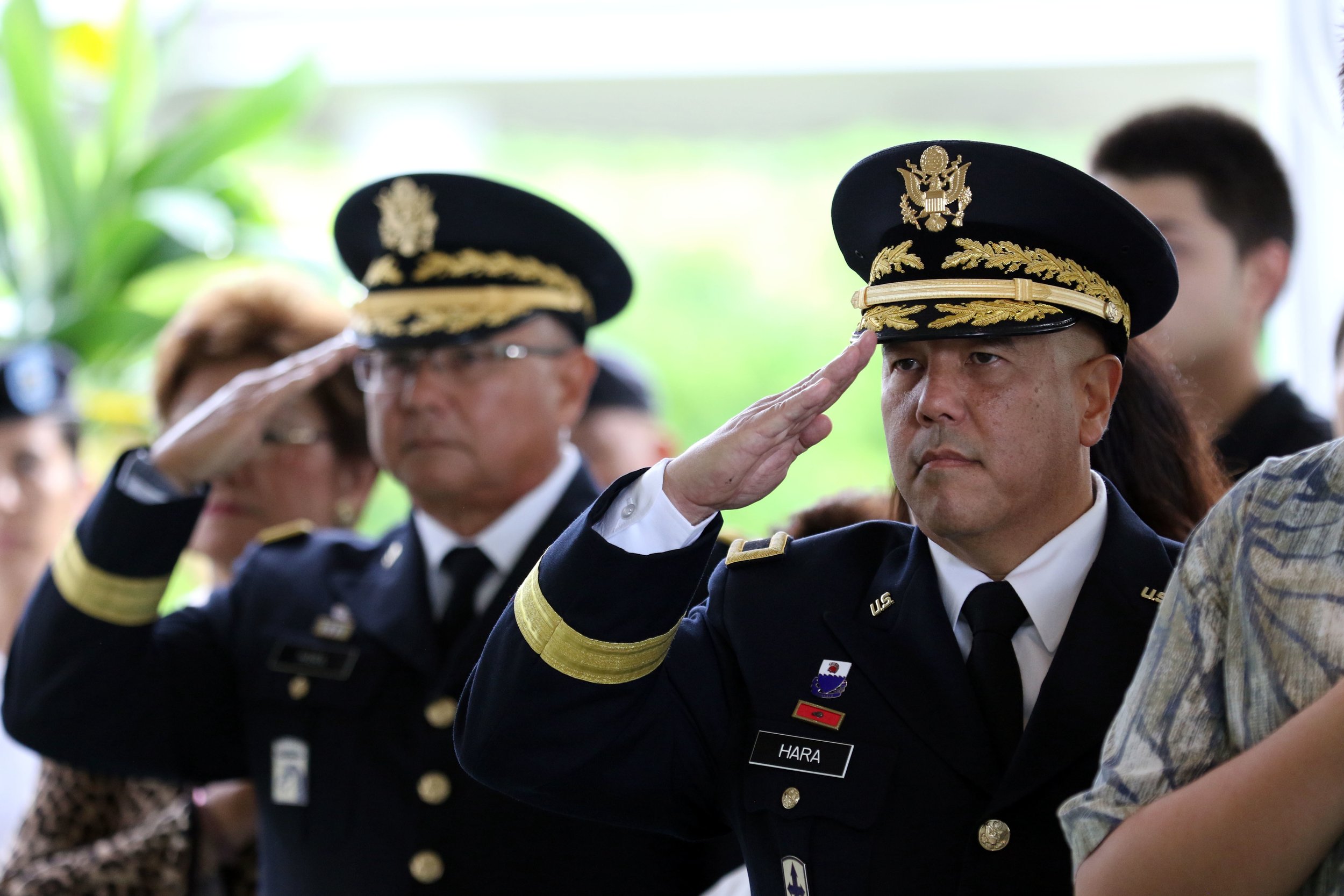
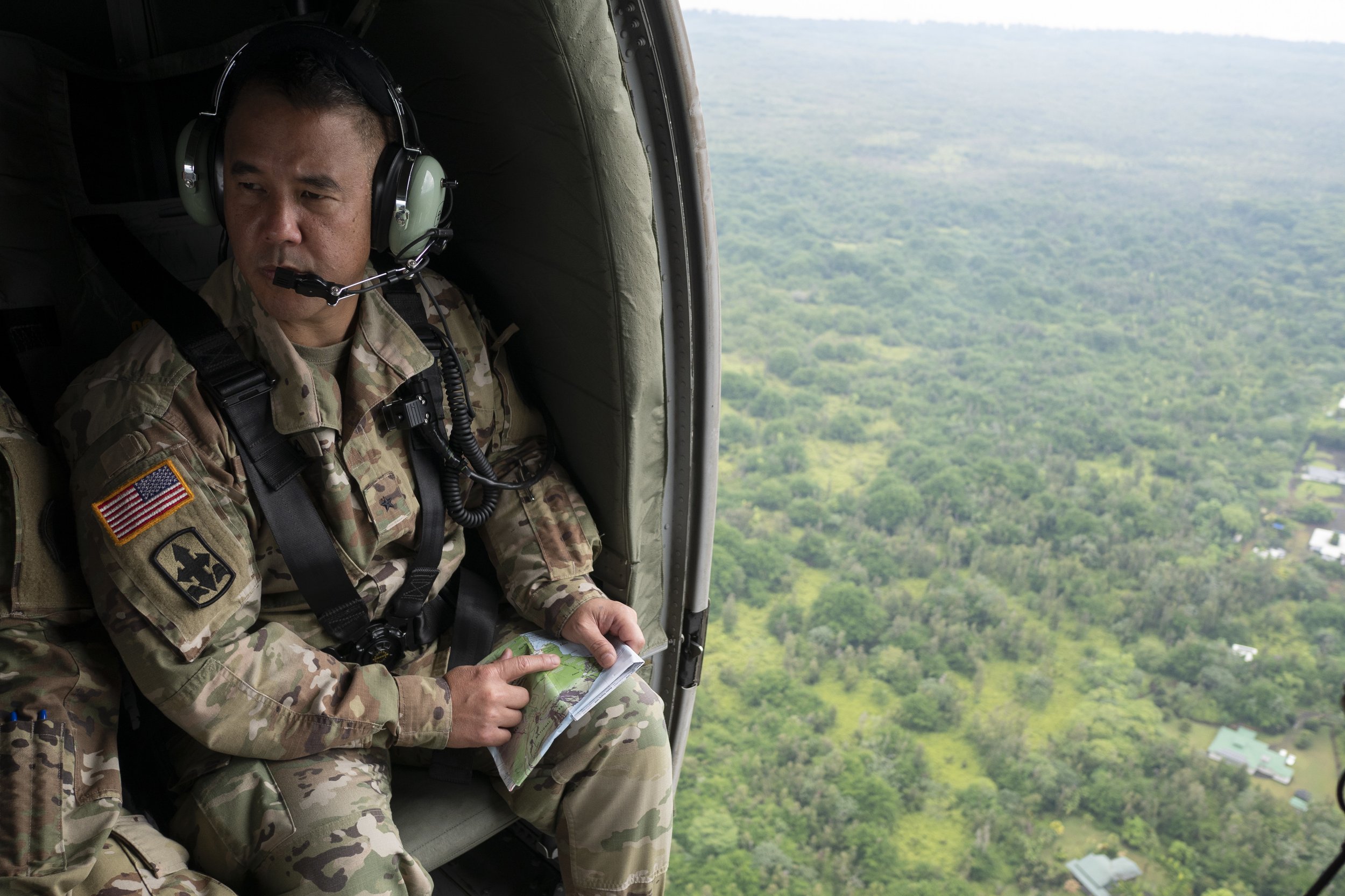
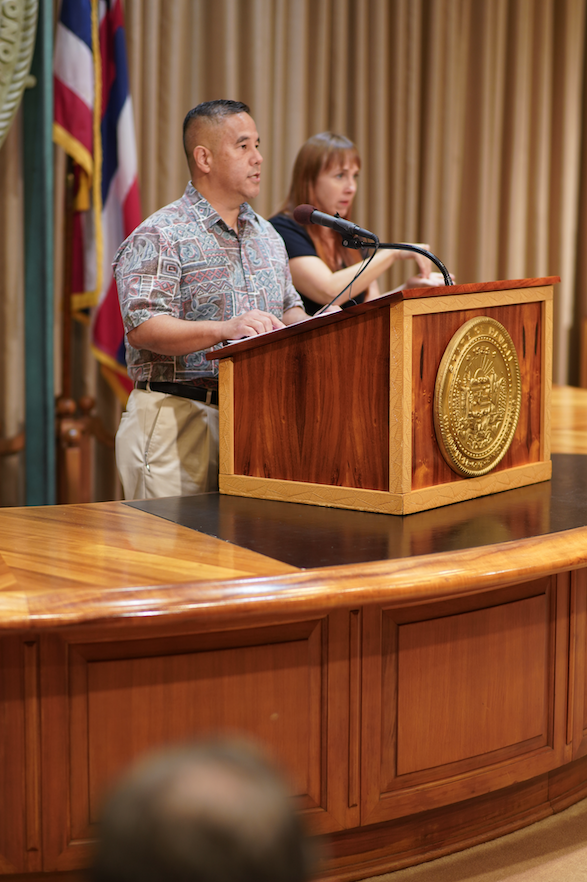
Major Gen. Kenneth Hara still remembers how his father’s face lit up the day that he told him that he was going to follow the family legacy and join the Hawaii Army National Guard.
It was the same look that he had on his own face when his son Justin Hara was recently promoted to Guard second lieutenant.
“It’s a pretty awesome to see Justin become the first of the third generation of the ‘Henry Hara Clan,’” says Kenneth Hara, speaking from his Guard office, where he’s been living since the COVID-19 crisis started.
Retired Lieutenant Colonel Henry Hara, respectfully referred to as the “Shogun,” served over 37 years in the Guard. He spent more than 13 years as commander of the 2nd Battalion, 299th Infantry in Hilo.
All of Henry Hara’s boys—Gary, Dennis and Larry, and his youngest Kenneth Hara—served in the Hawaii Army National Guard; collectively, they’ve accumulated more than 192 years among its ranks.
Kenneth Hara, who turned 54 on July 4, would argue that he doesn’t stand out among his accomplished family. But his contemporaries say his military acumen—as well as his unflinching honesty and accountability make him the right man to lead Hawai‘i’s COVID-19 response and recovery. (He apologized when his duties made him one minute late for this HILuxury interview.) Heading up the Hawai‘i Emergency Management Agency, Hara was appointed to a new role, Incident Commander, in March.
Col. Stephen Logan, Hawai‘i’s Acting Adjutant General, says Hara is the only officer in Hawaii National Guard history to be assigned as a Dual Status Commander by the U.S. Secretary of Defense in response to a presidentially-declared disaster, not only once, but twice—during the Kilauea Lava Flow, and Hurricanes Lane and Olivia in 2018. That same year, he also dealt with the massive April 14-15 flooding in Kaua‘i, which blistered the county with approximately 50 inches of rain in 24 hours.
“What impresses me most about him is his ethical character and insistence on executing the hard right over the easy wrong,” Logan says. “At higher levels of leadership, these decisions become more and more complex. MG Hara consistently develops subordinates to emulate the Army ethos.”
Since being tapped for COVID-19 response by Gov. David Ige, Hara has been treating it like a military deployment.
“Sometimes, I only get two hours of sleep, so it makes sense to live at the office,” he says.
On the weekends, his family comes to visit him. Hara’s wife and their
five children are familiar with the demands of the military from Hara’s many other deployments. These include three combat tours: the first in Baghdad, Iraq; the second in Kuwait and Iraq; and the third in Kandahar, Afghanistan.
He’s also spent time battling Hawaii’s natural disasters. In 1992, he was in Kaua‘i for a month following Hurricane Iniki. After the 2006 Kīholo Bay earthquake, he was task force commander running emergency operations on the Big Island. In 2014, he ran point when Hurricane Iselle became the strongest tropical cyclone to make landfall on Hawai‘i Island. Then, in 2016, he dealt with 16 named storms that came into the Central Pacific.
Still, Hara says all of those challenges pale in comparison to COVID-19.
“I think [it’s] because of the impact internationally and nationally,” he says. “This is the first time every single state and territory is under a state of emergency.”
Constance Lau, CEO & President of Hawaiian Electric Industries, says if she trusts anyone to lead Hawai‘i through COVID-19, it’s Hara. She’s grown to respect him as he’s risen through the ranks—Chief of the Joint Staff of the Hawaii National Guard, then Assistant Adjutant General and the state’s Adjutant General.
“When you meet him, you know he’s no-nonsense,” says Lau. “He’s been on the frontlines and commanded troops willing to make the ultimate sacrifice for all of us. I’m so proud of this local boy made good, and what a good human being he is.”
Mike Leong, a friend from the Hawaii Historical Bottle Collector’s Club, says Hara’s persistence and intelligence is evident even when he’s indulging hobby.
“It’s good to find a bottle and take it home, but it’s the thrill of the hunt that attracts people,” Leong says. “It takes a lot of research. We look at old maps together and we talk to old-type people. We put the puzzle together.”
These days, Hara is busy trying to solve the ever-changing jigsaw that is COVID-19. While the coronavirus is unlike anything that he (or any of us) has ever dealt with before, Hara’s not without a playbook. He says in this case, as in all others, leadership starts with making “transparent decisions” that reflect the community’s “morals and values.”
Here, he doesn’t mince words: “Whenever there’s an emergency, my 100% focus is on saving human lives and preventing human suffering.”
